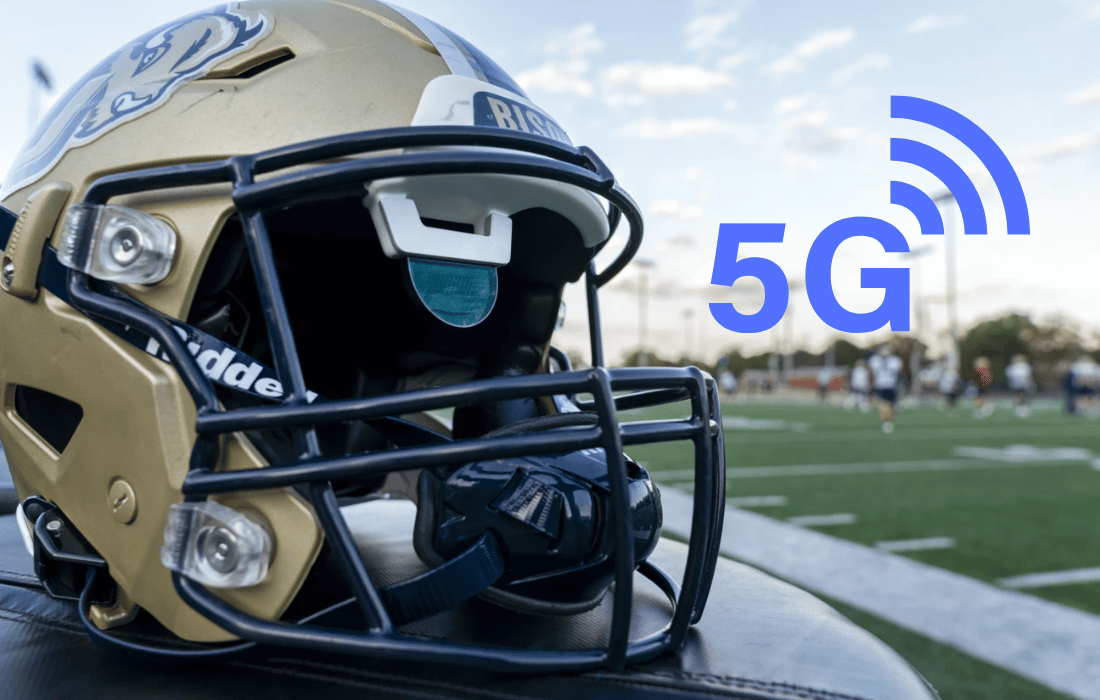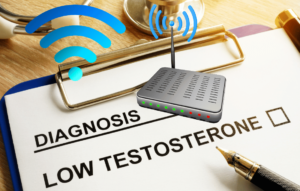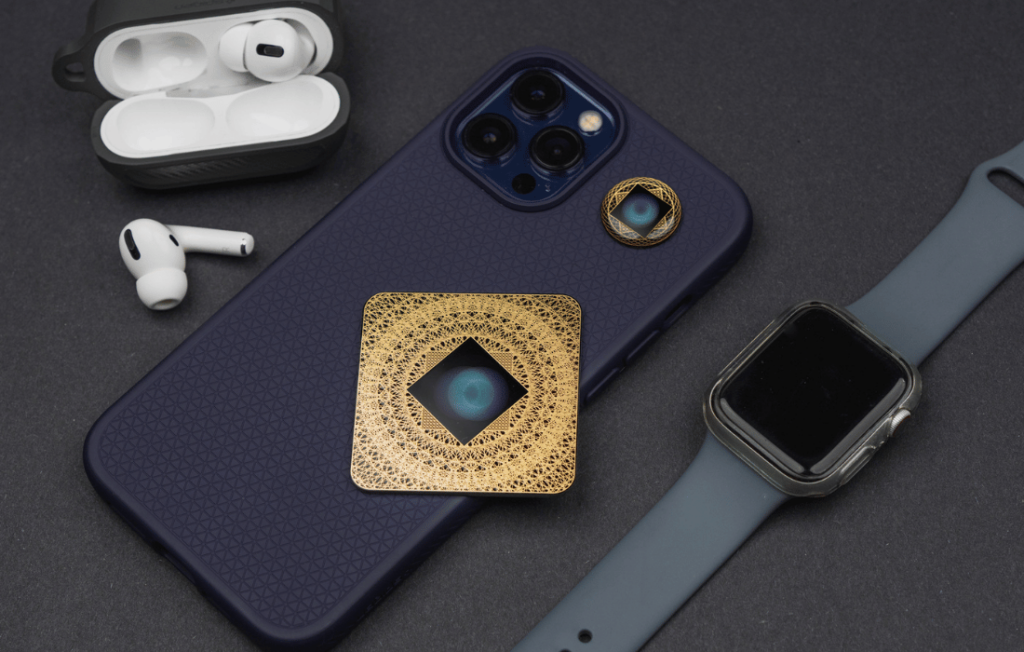The introduction of Gallaudet University’s 5G-enhanced football helmet represents a monumental shift in inclusivity and technological innovation in sports. Approved for full-season use by the NCAA, this groundbreaking invention addresses a longstanding challenge for deaf and hard-of-hearing athletes: real-time communication on the field. Developed through a collaboration between AT&T, helmet manufacturer Riddell, and Gallaudet University, the helmet leverages the power of 5G technology to break barriers and redefine what’s possible in sports.
This helmet is more than a high-tech gadget; it symbolizes a future where accessibility and innovation go hand in hand. Yet, as with all emerging technologies, it is essential to examine not only its benefits but also the potential health implications. With the helmet’s 5G integration, there is growing interest in understanding how electromagnetic field (EMF) exposure could affect the body, particularly the brain. Let’s explore the helmet’s capabilities, the science behind 5G and EMFs, and how products like Aires Tech’s EMF protection devices can mitigate risks for athletes.
The 5G-Enhanced Helmet: A Closer Look
The 5G-enhanced helmet is a technological marvel designed to eliminate communication hurdles for athletes who are deaf or hard of hearing. Gallaudet University’s football team, composed predominantly of deaf athletes, faces unique challenges in play execution and real-time decision-making. Traditional methods like sign language and visual signals can be limiting in fast-paced situations where split-second decisions are crucial.
With this new helmet, communication is seamless. Coaches use a tablet to send plays directly to a digital display embedded inside the helmet, allowing players to receive visual instructions in real time. The helmet’s 5G connectivity ensures ultra-fast data transmission, minimizing delays and enabling instant updates. This innovation effectively replaces traditional radio-based systems, which rely on auditory communication, and sets a new standard for inclusivity in sports.
The NCAA’s approval of the helmet marks a significant milestone, not just for Gallaudet but for all athletes who may benefit from accessible sports technology. This approval followed a successful trial during the 2023 season, where the helmet proved its value in reducing on-field errors and streamlining play changes. Gallaudet’s head coach, Chuck Goldstein, praised the helmet for its potential to revolutionize the game, highlighting its ability to overcome communication barriers that have long been a challenge for deaf athletes.
How 5G Technology Powers the Helmet
At the heart of the helmet’s functionality is 5G technology. Unlike previous wireless networks, 5G offers unparalleled speed, low latency, and high reliability. This makes it ideal for applications requiring real-time data transmission, such as the helmet’s play-calling system.
The low latency of 5G means that plays are transmitted to the helmet’s display almost instantaneously, ensuring that players can react quickly to changing game scenarios. Additionally, 5G’s ability to handle a massive volume of data allows for seamless communication, even in crowded environments like sports stadiums, where network congestion is often an issue.
However, the deployment of 5G has sparked debates about its potential health impacts. With its higher frequency signals and increased density of EMF emissions, 5G introduces a new layer of complexity to the discussion around electromagnetic exposure and its effects on the human body.
Understanding the Health Implications of EMF Exposure
Electromagnetic fields are all around us, emitted by everything from cell phones to Wi-Fi routers. However, 5G’s higher frequencies and increased power density represent a significant escalation in exposure levels.
How EMF Impacts the Body
Research indicates several ways in which EMF exposure can affect the body:
Disruption of the Blood-Brain Barrier (BBB): High-frequency EMFs may increase the permeability of the BBB, allowing toxins to enter the brain and potentially causing neuroinflammation.
Oxidative Stress: EMF exposure generates free radicals, leading to oxidative stress, which can damage cells, proteins, and DNA.
Impact on Sleep Patterns: EMFs can disrupt melatonin production, leading to poor sleep quality and impaired recovery for athletes.
Cellular Dysfunction: Interference with cellular signaling and communication may hinder the body’s ability to repair and regenerate.
Immune System Suppression: Chronic EMF exposure may weaken the immune response, making athletes more susceptible to illnesses.
Hormonal Imbalances: EMFs have been linked to disruptions in hormonal regulation, potentially impacting athletic performance and recovery.
Increased Risk of Neurodegenerative Diseases: Long-term EMF exposure is associated with an elevated risk of conditions such as Alzheimer’s and Parkinson’s disease.
Behavioral and Cognitive Effects: Studies suggest that EMF exposure may impair memory, concentration, and decision-making.
By listing these impacts, athletes and coaches can better understand the potential risks associated with 5G technology and take proactive steps to mitigate them.
Innovative Tech Meets Age-Old Risks
The introduction of the 5G-enhanced helmet is a double-edged sword. On one hand, it represents a remarkable leap forward in making sports more inclusive and efficient. On the other hand, it brings age-old concerns about the unintended consequences of technological advancements. For decades, new technologies have outpaced our understanding of their long-term effects. The integration of 5G into sports equipment is no exception.
As athletes increasingly rely on wearable technology—from fitness trackers to helmets—it’s essential to strike a balance between embracing innovation and protecting their health. This is where tools like Aires Tech’s EMF protection devices become indispensable.
Athlete-Centric Safety: Why It Matters
Athletes operate in high-stress environments that demand peak physical and mental performance. The introduction of technologies like 5G-enhanced helmets adds another layer of complexity to their already demanding routines. Beyond the potential health risks of EMF exposure, athletes face unique challenges, including heightened oxidative stress, immune suppression, and mental fatigue. Ensuring their safety isn’t just a matter of ethics—it’s about preserving their longevity and success in sports.
For institutions like Gallaudet University, this means adopting a holistic approach to athlete care, combining cutting-edge technology with proactive health measures. By addressing concerns such as EMF exposure, they can ensure that athletes reap the benefits of innovation without compromising their well-being.
The Bigger Picture: 5G in Sports Beyond Gallaudet
The implications of Gallaudet’s 5G-enhanced helmet extend far beyond its football team. As 5G technology becomes more prevalent, it has the potential to revolutionize sports across the board. Imagine basketball players receiving real-time defensive strategies on their wearables or soccer players accessing live heatmaps of opponent movements. The possibilities are endless.
However, with these advancements come responsibilities. Organizations must prioritize the health and safety of athletes, ensuring that the benefits of 5G technology don’t come at the expense of their well-being. This means investing in research, monitoring EMF exposure, and adopting protective measures like Aires Tech devices.
Mitigating EMF Risks with Aires Tech

Aires Tech offers a cutting-edge solution for addressing the potential risks associated with 5G and other EMF exposures. Using patented microprocessor technology, Aires Tech devices neutralize the biological effects of electromagnetic fields, providing a practical way to protect athletes and others in high-EMF environments.
Aires Tech’s products work by restructuring chaotic EMFs into coherent patterns that are less harmful to the body. This reduces the biological impact of EMF exposure, helping to preserve the integrity of the BBB and minimize oxidative stress.
For athletes using 5G-enhanced helmets, integrating Aires Tech devices into their gear could provide an additional layer of protection. Small, lightweight, and portable, these devices are easy to use and can be seamlessly incorporated into sports equipment.
Conclusion
The 5G-enhanced helmet is a testament to the power of innovation to break barriers and create new opportunities. For deaf athletes, it represents a long-overdue solution to communication challenges, leveling the playing field and showcasing the potential of technology to foster inclusivity.
Yet, with great innovation comes great responsibility. As we celebrate the helmet’s success, we must also address the potential risks associated with 5G and EMF exposure. By combining advanced technology with proactive safety measures like Aires Tech’s EMF protection devices, we can ensure that the future of sports is not only inclusive but also safe and sustainable.
For more information on EMF protection and how it can benefit athletes, explore Aires Tech’s offerings here. Let’s move forward together, embracing innovation while prioritizing the health and well-being of those who make sports extraordinary.










